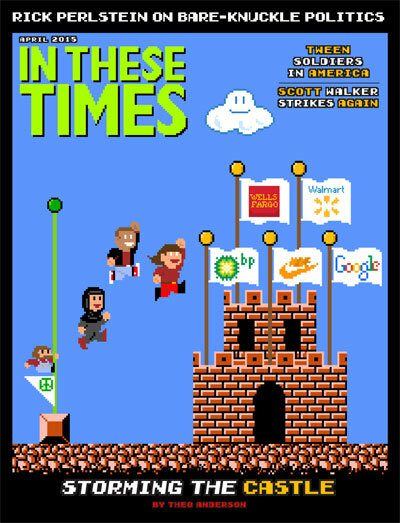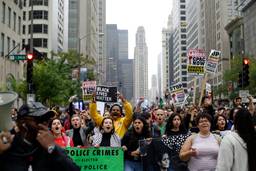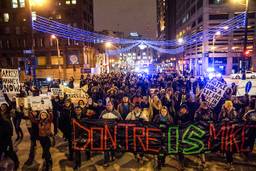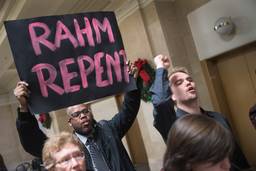Why Chuy Garcia Needs To Condemn Rahm Emanuel’s Secret Police Interrogation Site (Updated)
By any other name, it still smells like torture.
Flint Taylor
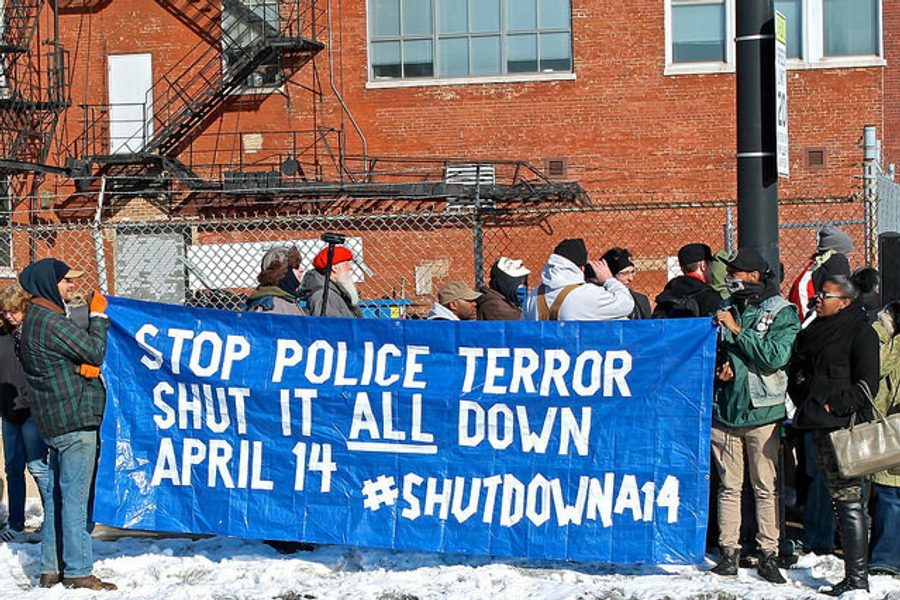
Guardian investigative reporter Spencer Ackerman has sparked a firestorm with a series of reports exposing a “secret” site, in the heart of Chicago’s predominantly African-American West Side, at which police have conducted off-the-books interrogations for more than 15 years.
Ackerman reports that black and brown suspects and witnesses, as well as white activists, have been taken by police to the abandoned Sears and Roebuck complex, known as Homan Square, and subjected to abuse. The victims describe, variously, being denied contact with lawyers or family for up to three days, being shackled hand and foot, and being subjected to starvation, sweltering heat, sensory deprivation and beatings. On at least one occasion, a detainee — John Hubbard, 44 — died in an interview room. (After the Guardian article appeared, Cook County said the death was due to heroin intoxication.)
The initial Guardian exposé prompted calls for an investigation from two former high-level Justice Department officials, William Yeomans and Sam Bagenstos, and several progressive Chicago politicians (including one, Luis Gutierrez, who has been a conspicuous supporter of Chicago Mayor Rahm Emanuel). The city attempted to give the growing scandal the back of the hand: Emanuel stated that the allegations were “not true. We follow the rules.” The police department issued a statement claiming that the site was not secret, that lawyers had access to their clients (the lawyers disagree) and that the charges of brutality were “offensive.” The local press, beaten on the story — by a UK paper no less — and having lost many of its award-winning investigative journalists years ago, turned to the Chicago Sun-Times’ veteran police reporter, Frank Main, who has long embedded with the CPD, to attack the Guardian reports. Main said that he had been to Homan Square 20 to 30 times to be shown drugs seized in raids. This, however, exhibits only the strange hidden-in-plain-sight nature of Homan Square: Press and lawyers were sometimes allowed in, but the interrogations and brutality were never reported. Nonetheless, a local NPR reporter, relying on Main’s assertion and doggedly focusing on the Guardian’s use of the term “black site” to draw a parallel with the CIA’s secret interrogation sites in the Middle East, attempted to dismiss the reports as “exaggerated.”
The Guardian countered with yet another story, which detailed four more cases of secret physical abuse in “kennel-like” cells at Homan Square. The young African-American men describe being grilled about guns and gangs for days. This time, the alleged practices included handcuffing both wrists in a way that, according to the victim, felt like being “crucified,” and stomping on another victim’s groin.
The textbook definition
So how should we view Homan Square? The U.N. Convention Against Torture and Other Cruel, Inhuman or Degrading Treatment or Punishment, which has been adopted, with reservations, by the United States, defines torture as follows:
Any act by which severe pain or suffering, whether physical or mental, is intentionally inflicted on a person for such purposes as obtaining from him or a third person, information or a confession, punishing him for an act he or a third person has committed or is suspected of having committed, or intimidating or coercing him or a third person, or for any reason based on discrimination of any kind, when such pain or suffering is inflicted by or at the instigation of or with the consent or acquiescence of a public official or other person acting in an official capacity.
Given this, the emerging evidence of abuses at Homan Square once again places the question of systemic, racially and politically motivated torture squarely at the doorstep of the political powers that be in Chicago.
The similarities to the Burge torture era of the 1970s and 1980s are hard to miss. While the coercive tactics that have so far been documented at Homan Square are not as extreme as those practiced by then-Police Commander Jon Burge and his men (which included electric shock, simulating suffocation with a bag and mock-executions), they still intentionally inflict ”severe pain or suffering, whether physical or mental” as forbidden by the CAT. During the Burge era, lawyers and family members would call the police looking for an African-American client or loved one who had been taken into custody, only to be told that he or she was not there. When the person was finally located, Burge and his confederates had finished their torture and abuse, and in most cases, obtained a confession. Similar to Homan Square, numerous black men, including Darrell Cannon, Michael Tillman, and Alonzo Smith, were taken offsite to remote locations or to the basement of the police station to be interrogated under torture. And, as in Homan, at least one person died under highly suspicious circumstances on Burge’s watch.
Homan Square itself has a direct tie to other brutal chapters of Chicago police history: The site is geographically located in the notorious Fillmore Police District, near the former Area 4 detective headquarters. In the 1980s and 1990s, a team of well-known Area 4 detectives interrogated suspects with a viciousness that was second only to that of Burge and his men. Decades earlier, in the 1960s, Fillmore District Officer James “Gloves” Davis, and his partner, Nedrick Miller, patrolled the streets with a brutality so extreme that they are remembered by residents to this day. (Davis has another claim to infamy: When the Chicago police were enlisted by Cook County State’s Attorney Edward Hanrahan and F.B.I. Director J. Edgar Hoover’s Cointelpro program to execute the deadly West Side raid on the apartment of Black Panther leaders Fred Hampton and Mark Clark, Davis was one of the leaders of the raid, and bullets from his carbine were found in the bodies of both of the slain leaders.)
More to unearth?
The first case of Burge related torture came to light in 1982, but it was more than two decades before the larger scope of his unit’s systemic torture on the South and West Sides of Chicago — 120 victims and still counting — was unearthed. So it is little wonder that the stories emerging from the sprawling brick edifice chill those who have experienced similar terrorizing brutality at the hands of the Chicago police. At a rally in front of Emanuel’s City Hall on March 2, torture victim Darrell Cannon linked Homan Square to Burge’s racist torture, paraphrasing Martin Luther King Jr.: “Justice denied to one is justice denied to all.” Angry young activists of color at the rally suggested that the revelations to date are just the tip of an iceberg and described everyday occurrences of brutal interrogations in their communities. Since the Guardian stories hit, lawyers have come forward and complained that holding clients incommunicado is a citywide problem.
That it is, without doubt, and it is much too early to call the story “exaggerated” or to conclude that there has been transparency with regard to what goes on in those kennel-like cells. One veteran and well-respected African American activist, Prexy Nesbitt, who has lived in the shadow of that complex of buildings and had tasted the lawlessness of the Fillmore cops back in the day, has asserted, with a straight face, that Homan Square is “where the bodies are buried.” Unfortunately, in Chicago that statement can be taken literally, as well as figuratively.
On the Saturday after the first Homan Square article broke, a group of hardy protesters, led by Black Lives Matter, gathered before the fortified entrance of the main building. A spokesperson posed questions to the silent row of police guards: “How many people are you holding there?” “What are you doing to them?”
Those questions deserve answers, along with many others. Foremost among them: Given Chicago lawyers’ reports that officers feel free to practice these kinds of abuses throughout the city, what is the purpose of taking people off the books to interrogate them at Homan Square? And who, among the thousands that may be taken into custody by the Chicago police on a given week, are brought there?
The CPD isn’t telling. But an answer may be pieced together from what the police, the embedded reporter and the Guardian’s exposé have so far revealed. Here’s what we know: First, the CPD’s undercover operations and intelligence and anti-gang units are based at Homan Square. Second, selected political activists are brought there, along with youth of color. The former are questioned about “terrorist” and other political activities, and the latter are grilled about gang activities, drugs and guns. Third, detainees are secreted away from their lawyers and families for as long as possible, sometimes days. Fourth, in many instances they are not charged with a crime. Fifth, one of Homan Square’s main functions is, by the CPD’s own admission, to “disrupt” gang activity, in a chilling echo of how the FBI’s Cointelpro program characterized an illegal set of tactics, which were also practiced by the CPD’s notorious Red Squad and Gang Intelligence Unit to trample on the rights of political activists and people of color in the 1960s and 1970s.
All of this indicates that Homan Square houses a centralized police intelligence gathering and disruption operation — secret, lawless, and out of control. Since the tactics at least sometimes include human rights violations forbidden by the United Nations Convention Against Torture, it seems depressingly appropriate to liken Homan Square to Burge’s House of Screams, to Guantanamo Bay, and yes, to the CIA’s secret black sites.
The politics at play
Two final overarching questions also must be posed: How, if at all, will the Obama Justice Department respond? And will these related human rights issues impact the mayoral runoff between Mayor Rahm Emanuel and progressive challenger Jesus “Chuy” Garcia on April 7?
With regard to the Justice Department, local activists remember all too well that Barack Obama, when a state senator, steered a wide berth around the Burge torture issue. That, coupled with his staunch support for his former chief of staff in the mayoral primary, make the chances of a meaningful federal investigation, at least in the short term, next to zero.
As for the mayoral race, Garcia took a position in the primary elections that, to many progressives, appeared to be to the right of Emanuel on the issue of policing. He called for 1,000 more cops on the street in his one and only TV advertisement, a position that hardly resonated with those people of color and progressives who suffer the slings and arrows of overly aggressive, racially motivated policing. He does support the ordinance for reparations for Burge torture survivors, but came to it late in the campaign, with an ill-informed written statement. He thereby missed a golden opportunity to seize upon an issue that would have further separated himself from Emanuel — who has refused to commit to the ordinance despite its support by a majority of the City’s aldermen — while appealing to the African-American community.
The Homan Square scandal offers Garcia yet another chance to show progressives and people of color that he is committed to reform a corrupt and brutal police department. With a broad-based attack on his opponent for failing to support torture reparations or to halt Homan Square, Garcia would be taking a page from his mentor, the late and great Mayor Harold Washington. Harold’s campaign caught fire in 1983 when he heeded the advice of one of his progressive advisors and seized on the issue of rampant police brutality to attack the incumbent, Jane Byrne. His base was galvanized, and the rest is history. Unfortunately, to date, Garcia has ignored that successful example and remained silent on Homan Square. Time is running short, but to paraphrase the late Congressman Ralph Metcalfe, it is never too late to be right.
Update: On the evening of March 5, in response to several inquiries from In These Times, mayoral candidate Chuy Garcia issued a brief statement on Homan Square, “Media reports about issues at Homan Square raise troubling questions. I call on Mayor Emanuel to answer those questions.” His campaign indicated he would be releasing a longer statement in the coming days.
